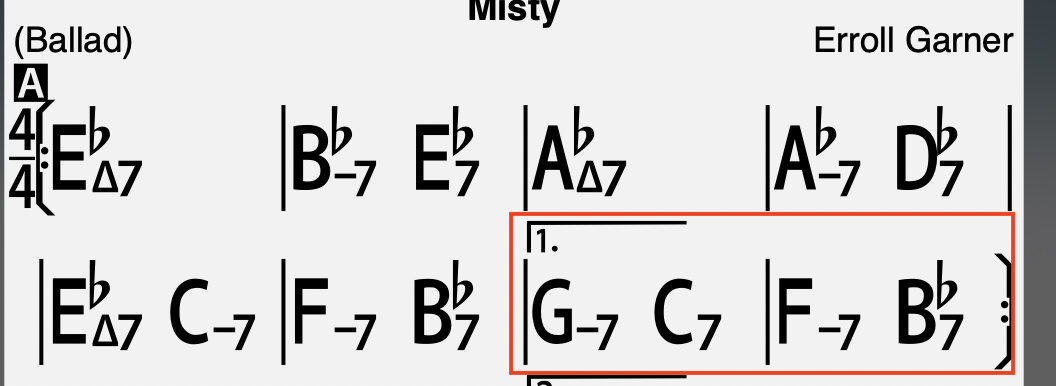This post is about Misty, but I suppose any discussion of changes / chart corrections could go here.
So. The PG-supplied chart for Misty has these changes for the B-section turnaround,
| Bb9 Edim7 | Fm11 Bb13(b9) |
That’s how I’ve been playing the tune for a couple of months. Nifty. So I finally installed iReal and i’m playing along, minding my own business, and suddenly the turnaround sounds nasty, and I don’t mean playfully wicked. The iReal chart has this for the same turnaround:
| Gm7b5 C7 | Fmin7 Bb7 |
So those first two chords aren’t playing nice with iReal. It’s a situation. The PG Beginner Arrangement PDF has a D instead of a Db, which makes sense with a Bb9, but not with the half-diminished G chord. The C7 and Edim7 chords are basically interchangeable, so I suppose there will be a variation in transcription depending upon what the bass player’s doing (or whoever’s playing the bass note), but the D/Db is making things a little tense.
I should mention that the iReal chart comes from IReal forum’s 1300 jazz standards download thing. But the discrepancy appears elsewhere, too. My old Real Book (not the “New” edition) has a Gmin7b5 too. I quickly looked up an analysis of the chart on YouTube, and that example has a Gmin7.
Obviously, lives aren’t at stake here, and the fix for iReal is trivial. But I am curious about the correct analysis, whatever that means. It does seem like a Gmin7 to C7 change makes the most sense, because it’s a pretty straightforward ii-V setup for the Fmin7,
Anyone have a take on this? Thoughts? Feelings? Angry retorts?
